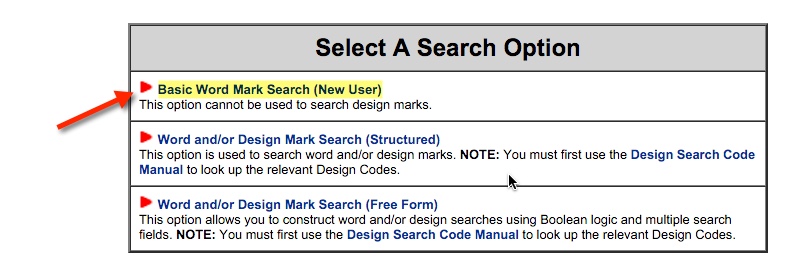
Of course, this assumes that you have already chosen a proper, trademark-worthy name.
The dangers to moving forward at this stage without conducting a proper trademark search are not initially apparent to the novice business owner. But you need to make sure that another business that competes in your industry has not already trademarked your chosen name. Legally speaking, you are presumed to have conducted a proper search of the trademark registry.
So if you start operating a new brand under a name that was previously trademarked, your best case scenario is that you invest thousands into building your brand name, only to be shut down and forced to change your name later… at great expense to you. Worst case? You get sued, are found liable for trademark infringement, and have to pay a great deal more in damages and legal fees – not to mention your business gets shut down and you are forced to change your name anyway.
So it goes without saying that conducting a proper US trademark search is imperative whenever you are starting a new business or brand.
How to Conduct a Proper US Trademark Search
The first and most obvious step of this process is to head over to the US Patent and Trademark Office's main database at http://tmsearch.uspto.gov/. Let's assume you are starting a new brand on Amazon, and you want to call your brand “TNT Sportswear”. (I just came up with this off the top of my head, so let's see what pops up?)
You will want to click on the “basic word mark search” button:

Preliminarily, the results will show there is no other company that has registered this name.
Unfortunately, this is not the end of the story. You will want to do more digging. We would recommend doing an additional search for “TNT” and other possible variations of the name you are seeking to register. A search for TNT alone, for example, returns 385 results! Of those, there are 120 live records. This means they are either valid trademarks, or pending applications. You (or an attorney), will need to go through each of these records to determine whether there are any other records of “TNT” in the class of products or services that you intend to sell in.
Contact us if you would like us to conduct a full, comprehensive trademark search for your proposed mark.
Let's assume, for purposes of this article only, that TNT Sportswear is valid in that no other company or brand has trademarked this name. There are still some additional steps you need to take.
You Need to Conduct a “Common Law” US Trademark Search
You must also rule out the possibility that there is another company or brand that has “common law” rights to this trademark. That means that they are actively using the mark you are seeking to register, but haven't yet registered it themselves with the USPTO. Even if they haven't registered the trademark with the federal government, they may still have what are commonly referred to as “common law” rights to use that mark.
How do you conduct a proper common law search for your proposed mark? There are several steps you need to take. And while none of them are extremely difficult, they can be time consuming and somewhat tedious.
- Visit the Secretary of State's website in both your home state, and the states you plan to do business in. (If you are selling products on Amazon, this is pretty much all states.) Can you find another business that has already registered your name as a state trademark? State registration can be faster and less costly than federal registration, but the mark will only have protection in the states that you choose to register it in.
- Do a comprehensive search on all the major search engines, including Google, Yahoo! and Bing. Don't rely only on the results of the first page. We recommend that you go at least 10-20 pages deep for each variation that you are searching for.
- Do a domain name search. We recommend https://instantdomainsearch.com/ for quick searches, but double check any available domains on a second website, such as http://www.namecheap.com.
- Go to the white and yellow pages directories and conduct a search there.
- Especially if you are planning to sell products on Amazon, you will want to do a search there as well. Make sure to check the Amazon Brand Registry.
Other Trademark Search Options
There are certainly other options available to you to do a comprehensive trademark search. The cost will vary with the scope of the search. (i.e., the more comprehensive the search, the more expensive it will be). Whether a paid search will be necessary depends in large part on how unique the name is that you have chosen.
The main benefit to using an attorney to conduct the trademark search is that they can provide you with an opinion letter than will help to protect you in the event you are ever sued for trademark infringement. If you use an online service or database, you will receive no such protection, and you can't be certain about how beneficial the results will be to you.
After conducting a search, an attorney can give you guidance on whether you should proceed to register the trademark or abandon the mark and start over with a new name.
What could possibly go wrong?
So you do a lackluster search, or worse, you skip the search altogether. What's the worst that could happen… really? Let's take a step back and consider the scenario.
You start a business selling physical products on Amazon. You place a small initial inventory order to test the market. Determining that you have a good product, you brand your second order, a larger order, with your logo and trademark, and you start selling. Things progress nicely, and you are selling several hundred dollars a day. Your initial investment seems to have been paying off.
Then you turn to a third-party platform such as Shopify. You build out a website and start selling your product there as well. Before you know it, you are selling between $15,000-$20,000 a month in inventory. As a result, you place another LARGE order.
Then it all comes crumbling down – you receive a cease and desist letter. The competitor wants you to take down your Amazon and Shopify listings immediately, as well as turn over your accounting records and other business information. They give you a deadline or you will face a lawsuit.
Not only are you out all the money you previously invested in inventory, but you also have products at Amazon that you need to deal with. Turns out, to get your inventory back from Amazon isn't free. They can either ship it back to you ($5 per unit when you have several thousand units is not inexpensive), or they can just trash it – still with a cost attached.
Don't think this can happen to you? Think again. This exact scenario happened to a friend of mine. He lost roughly $80,000 worth of inventory, and that doesn't even account for the costs in getting the inventory back from Amazon, which he is still trying to figure out.
And this isn't the only story like this. A woman named Robyn Hatcher ran a successful coaching and consulting business for almost 15 years before she she was threatened with a trademark infringement lawsuit. She did a simple google search initially, didn't find anything, so thought she was ok to use her name. She was wrong. One of her friends correctly told her, “Even if you wanted to fight it, you'd spend about five figures in legal fees with no guarantee of winning.” Here friend was being nice, I would have told her she was going to have to mortgage her house for six figures…
What's the conclusion here?
The important takeaways here are obvious. You need to conduct a proper trademark search for your company or brand before you invest thousands of dollars into start-up expenses and inventory. Don't ignore this advice. And even if a trademark search costs you some money now, doesn't it make sense to save you from a huge headache both personally and for your business later?
Be proactive. Do the search. Let yourself sleep easy at night knowing that your business won't be subject to a trademark infringement lawsuit later.
If you have questions, or would like to schedule a strategy session over the phone with Hawthorn Law to discuss how to conduct a proper trademark search and name your company or brand, feel free to contact us by clicking here.





